Gall wasp is an insect that lays eggs in soft tissues in trees, flowers and other plants. As the larvae develop, a gall forms and hinders plant growth.
Gall wasp general facts
Name: Cynips, Diplolepis, Neuroterus…
Common name: gall wasp
Appears in: spring to summer
Type: insect (wasp) – Spread: worldwide – Infects: shoots, leaves, buds
Size: 1/16th of an inch (2 mm) → 1/3rd of an inch (8 mm), depending on species
Generations per year – variable, up to a half-dozen
Usually, a single given insect will only contaminate a single plant species, or at most only members of the same plant family. In severe cases, the harvest is compromised and the plant may die.
Read also:
- Controlling gall wasp
- When still small, canker may look like gall wasp growth
- Other diseases that affect trees: black spot disease, sooty mold, scab, fireblight…
Symptoms of gall wasp
There are different kinds of gall wasp, and their impact on host species also differs, but there is one symptom that all have in common. They all cause galls!
A gall is a swelling of tissue such as leaf tissue, bark tissue, or bud tissue resulting from infection by a gall wasp.
- The gall wasp infects the host by laying eggs into the soft tissue.
- Depending on the case, the gall may take on many shapes, from perfectly round marbles to formless gobs on leaves, stems, twigs, bark, flowers or buds.
→ Good to know: galls are for the larvae. Adult gall wasps often feed on nectar or other food. They make great pollinators.
What is gall wasp
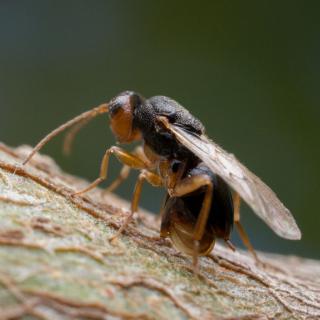
- A particular gall wasp species usually only infects a single specific plant species or genus.
For example, the citrus gall wasp will only infect citrus trees. Other plants and trees will not be infected by it. If no citrus tree is available, the citrus gall wasp will not be able to reproduce. Originally, it only infected finger lime, but when other citrus trees were introduced, it infected those, too.
- Note: not all galls result from gall wasp. Some galls are due to other insects like mites and midges, and still others are due to fungal or bacterial infections.
How does a gall wasp infect plants
- Gall wasp infects trees and plants by laying eggs in soft tissue, usually in spring or during growth periods
- Chemicals and enzymes and other toxins are released by the eggs or hatching larvae
- These force the host plant to produce extra tissue around the parasites, creating a swelling or gall
- The gall protects the hatchlings and usually provides gall wasp larvae with food
- When mature, larvae transform to adult insects and drill through the gall to mate and lay new eggs
Usually, a gall becomes visible to the eye around 1 to 6 weeks after the eggs were laid.
Plants vulnerable to gall wasp
Every day, botanists and entomologists discover new species. Only a fraction of all possible gall wasp and host plant relationships are know and described so far.
In gardens throughout the world, all types and families of plants have been known to support at least one or more gall wasps.
Gall wasp on trees
- Oak gall wasp – there are hundreds of different gall wasp species within the Cynipidae family that infect one or all oak tree species.
- Beech gall wasp – since this tree is related to oak, some gall wasps infect both species.
- Chestnut gall wasp – infects young branch shoots, flower buds and leaf buds. Interestingly, the female wasp doesn’t need to mate and produces eggs that are only female.
- Coral tree gall wasp – gall wasp lays eggs on leaves near main veins. Leaves are distorted and deformed, similar to leaf curl.
- Hickory, maple, elm and others host specific species as well.
Gall wasp on flowers
Rose gall wasp – mossy rose gall and spiny rose gall are both due to gallflies that infect rose shrubs.
- Waxflower gall wasp – gall wasp eggs on the stems induce a swelling and impact the branching of this flower shrub of the myrtle plant family.
- Sometimes flower galls are caused by aphids
Gall wasp on fruits & vegetables
- Raspberry gall wasp – grows on stems, produces roundish galls like a donut around the stem
- Blueberry gall wasp – produces a kidney-like gall around the twig that consumes all the sap to the branch
- Citrus gall – galls are swollen portions of stems and sometimes main veins on the underside of leaves
Gall wasp on succulents
- Currently, no significant cases of gall wasp on succulents have been found.
- Some succulents present strange growth patterns called carunculations that are genetic deformities. They’re not caused by gall wasp.
- There are cases where galls appear because of other causes, such as midges or fungus. An example is the aloe vera mite: it isn’t a wasp, but it also forms galls.
How to control gall wasp
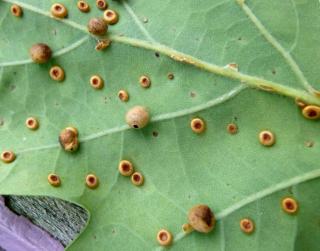
When natural predators aren’t common, manual removal is also very effective. Pruning off the gall-infected branches and leaves and then burning them works best when the timing is right: the new generation of wasps should not have emerged yet.
- Complete run-down of how to control gall wasp
Learn more about gall wasp
Over 1400 species of gall wasps have been identified and catalogued to date. This doesn’t include other types of galls, such as those due to fungus or mites.
Each wasp is usually specific to a single host plant species. This is because the chemical cocktail required to trigger gall formation is unique to each plant species.
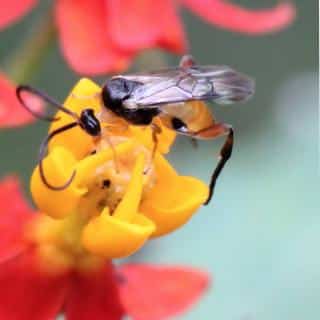
Some gall wasp species only lay eggs where other gall wasps have laid them, in the gall. They then benefit from the gall without having had to trigger it. These are called inquiline gall wasp. Usually they out-compete the original gall wasp for nutrients, much like a cuckoo replaces its siblings in the host bird nest.
Can a gall wasp sting?
Gall wasps won’t sting persons or animals. Their sting isn’t designed for attack, it’s actually simply a tube that lays eggs. It can pierce through woody tissue but the wasp won’t use it to defend itself.
Smart tip about gall wasp
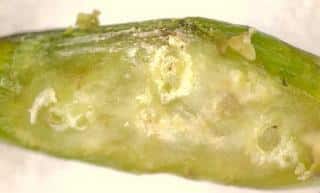
Indeed, the largest are only a few millimeters long (¼ inch). Another fitting name for them is “gallfly” or “gallflies”.
A sharp blade can slice open galls, revealing parasites inside.
More about plant diseases and pests
- Nature & Garden pages about garden pests and diseases

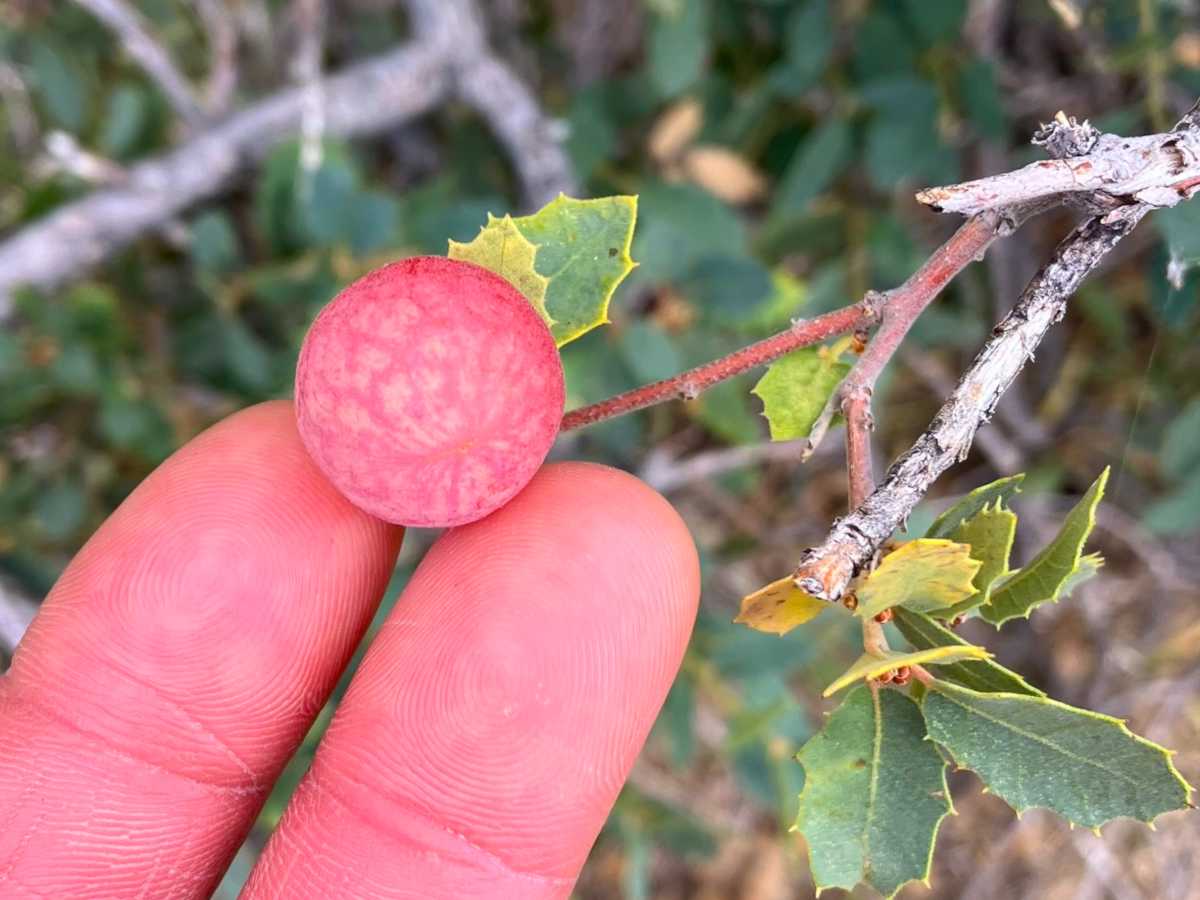
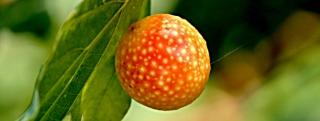
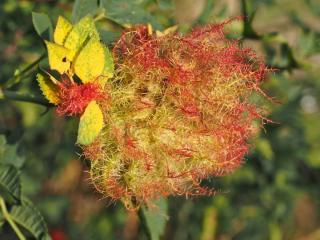

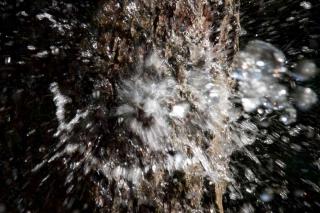
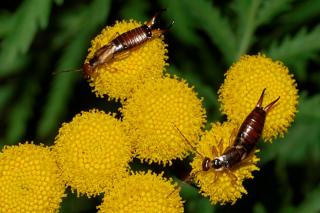
I’m curious as to whether green ants, as we call them in tropical Queensland, would control Gall Wasps.
These ants are very aggressive to humans but I have noticed no damage to citrus from fruit fly when these ants are present in the trees. They build a nest approximately 150mm in diameter by pulling the leaves together. It’s fascinating to watch them working.
That definitely sounds like a possibility to control gall wasps! Ants ferociously defend their territory against other insects. Perhaps the gall wasps don’t dare to risk their offspring in such trees!
Certainly the trade-off would be interesting to estimate: risk to orchard workers by ants vs better health in trees!